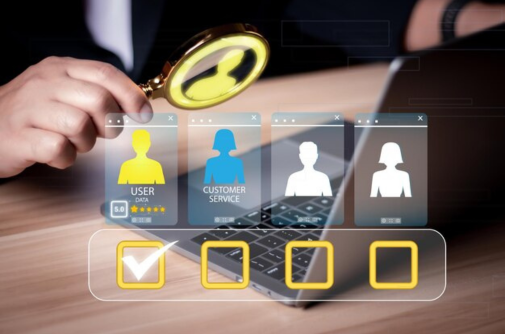In today’s hectic workplace, employee monitoring is so crucial Businesses are depending more and more on solutions like employee trackers and the finest employee monitoring software as they work to preserve security and productivity. However, is employee monitoring the best course of action for your company? The benefits and possible downsides of employee monitoring, on spy phone app well as their different instruments and advice on how to use them ethically and successfully,
Why Do Businesses Monitor Employees?
Employee tracker is not a new concept; managers closely monitored their teams even before the digital age to ensure productivity and efficiency. However, as technology has advanced, the methods used to spy on employees have become more complex and extensive. Let’s examine why companies feel the need to monitor employees.
- Boosting Productivity
- One of the main purposes of employee trackers is to assess how employees spend their work hours. By analyzing the amount of time spent on tasks, employers can find inefficiencies and implement plans to increase productivity.
- Ensuring Data Security
- Monitoring helps protect important data in organizations that handle sensitive information. The best employee monitoring software can identify anomalous activity and stop data breaches before they happen.
- Compliance with Regulations
- Strict compliance requirements exist in many industries. Employee monitoring tools lower the possibility of fines and penalties by ensuring that employees follow company and legal policies.
- Remote Work Management
- The increase in remote work has made it harder for managers to keep an eye on workers’ internet usage and hold them accountable. This gap is filled by monitoring software, which provides companies with insight into the time spent by remote workers.
Tools for Employee Monitoring

The digital age offers various tools to spy on employees—legally and ethically. Here are some common methods and how they can be used:
- Employee Trackers
- These tools log employee activities, such as time spent on specific apps or websites. They provide detailed reports on productivity levels and can even track physical locations for field-based roles.
- Internet Usage Monitoring
- Monitoring employee internet usage ensures that company resources aren’t wasted on non-work-related activities. This tool is particularly useful for identifying excessive social media browsing or unauthorized downloads.
- Screen Recording Software
- Some software periodically captures screenshots or records employees’ screens. While this can be useful for auditing purposes, it must be used sparingly to avoid privacy concerns.
- Keyloggers
- These tools track keystrokes to ensure employees aren’t sharing confidential information or engaging in harmful activities. However, keyloggers should only be used with clear communication to avoid breaching trust.
- Attendance Monitoring Systems
- Biometric devices and digital check-in systems ensure employees stick to their schedules. They’re especially helpful in industries with strict attendance requirements.
- The Best Employee Monitoring Software
- Comprehensive software packages combine multiple monitoring features, from productivity tracking to security monitoring. Examples include Hubstaff, Teramind, and ActivTrak.
Benefits of Employee Monitoring

Employee monitoring offers several benefits for businesses when implemented correctly. Here are some of the top advantages:
- Improved Efficiency
- By identifying time-wasting activities, businesses can help employees focus on high-priority tasks. For instance, employers can implement better work practices if a report shows excessive time spent on non-work websites.
- Enhanced Security
- Employee trackers and other SMS Spy App tools help protect sensitive data from being leaked or mishandled. They can also prevent cyberattacks by identifying suspicious behavior early.
- Better Accountability
- When employees know their activities are being monitored, they’re more likely to stay on track. This fosters a culture of responsibility and transparency.
- Remote Team Management
- Monitoring software makes it easier to manage remote teams, ensuring they remain productive even when working from home.
- Cost Savings
- By identifying inefficiencies and optimizing workflows, companies can save money in the long run. Additionally, monitoring can prevent costly data breaches and compliance issues.
Challenges and Ethical Concerns
While employee monitoring offers many advantages, it’s not without challenges. Businesses must tread carefully to avoid crossing ethical boundaries or damaging trust.
- Privacy Issues
- Monitoring employee internet usage or using screen recording software can feel invasive if not handled properly. Employees might feel their privacy is being violated, leading to dissatisfaction and mistrust.
- Over-Monitoring
- Excessive surveillance can create a stressful work environment. Employees might feel micromanaged, which can harm morale and productivity.
- Legal Risks
- Different regions have varying laws regarding employee monitoring. Businesses must ensure they comply with local regulations to avoid legal repercussions.
- Trust Erosion
- If employees feel their employer is spying on them without cause, it can damage trust and lead to higher turnover rates.
How to Implement Employee Monitoring the Right Way

To reap the benefits of employee monitoring without alienating your workforce, follow these best practices:
- Be Transparent
- Always inform employees about monitoring policies. Transparency builds trust and ensures everyone understands the purpose behind monitoring.
- Set Clear Boundaries
- Clearly define what activities will be monitored and why. Avoid invasive methods that could breach privacy.
- Use Tools Wisely
- Choose the best employee monitoring software that aligns with your business needs. Avoid overloading employees with excessive surveillance tools.
- Focus on Outcomes, Not Control
- Use monitoring data to improve processes and support employees rather than micromanaging them. This fosters a positive work environment.
- Regularly Review Policies
- Review and update your monitoring policies as technology and laws evolve to ensure they remain ethical and compliant.
- Offer Opt-Out Options
- For less critical roles, consider allowing employees to opt out of certain monitoring tools. This shows respect for their autonomy.
Final Thoughts
Monitoring employees has two drawbacks. The best employee monitoring software and employee trackers are examples of solutions that, when utilized properly, may increase security, compliance, and productivity. On the other hand, overzealous or badly executed monitoring might cause problems with trust and privacy.

